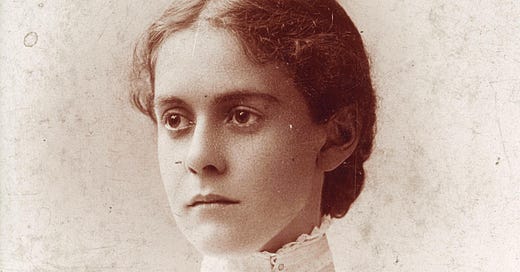They said the factory floors were no place for a woman. Too dangerous. Too dirty. Too rough with the stink of chemicals and the groan of machines. But Dr. Alice Hamilton, with her sharp eyes and quiet tenacity, unfazed by challenges, didn’t flinch. She went to the factories.
Born in 1869 in Fort Wayne, Indiana, Alice grew up in a privileged family of readers and thinkers. Her parents encouraged learning, and Alice, the second of five sisters, soaked it in. With time, she realized that she wanted to become a doctor to help people and have independence.
Alice earned her medical degree at a time when women were still a novelty in science. Then, she traveled to Germany to study bacteriology and pathology. When she returned to the United States, she didn’t settle into comfort; instead, she began working at Hull House, a settlement in Chicago that offered aid to the city’s poorest residents.
That’s where she saw it up close. Men, women, and children sickened by their work. Lead poisoning, mercury tremors, carbon monoxide hallucinations. Invisible poisons, insidious and unchecked. Nobody had studied these things. Not seriously, at least. So Alice did.
She walked through foundries and tanneries, spoke with laborers, and followed up on strange symptoms. She later described one factory experience in vivid detail:
"This is much the worst white-lead factory I have ever seen. It was built in 1843 and is crowded, dilapidated, dark, ill-ventilated. Dusty processes are carried on in the same room with dustless ones, so a needlessly large number of men are exposed. The dry corroded buckles and white lead from the separator and from the drying pans are wheeled in open barrows from building to building and even across the street. The enormous drying room is very dusty, but so is every department. There seems to be little concern for the health of the men and it is taken for granted that the majority will quit after a few months.”
But Alice didn’t accuse. She documented and turned observations into science. Her reports informed and challenged companies and governments to face what they had long ignored: the impact of the workplace on people. It made a difference.
Alice continues about the same factory, now transformed:
"It is pleasant to find, in the same file with these notes, the copy of a letter I wrote in 1913 to an official of the big country-wide corporation which owned this plant. In it I congratulated him on the vast improvement which had been brought about in two years’ time — new buildings, new devices for preventing dust, excellent housekeeping…
This was one of the many experiences which convinced me that the iniquitous conditions I so often found were not a proof of deliberate greed or even of actual indifference, but rather of ignorance and an indolent acceptance of things as they are. An alert and trained factory inspection service would have had little difficulty in righting these matters, for the employers were mostly very well-meaning, but throughout those early years I cannot remember ever seeing a single inspector or even hearing about one."
Alice never stopped asking questions. Never stopped paying attention. To those who knew her, she was steady. Unshakable. Kind. Not loud, but never silent in the face of injustice. And maybe that’s the most remarkable part—not just that she broke barriers or saved lives, but that she did it with such grace. That she didn’t demand credit. Only that the work got done.
She lived to be 101. Got to see laws change. Saw safer factories, national safety standards, and recognition of occupational disease. She saw what had once been ignored become a more significant part of the nation’s conscience.
Sources:
“Alice Hamilton.” Changing the Face of Medicine, U.S. National Library of Medicine, https://cfmedicine.nlm.nih.gov/physicians/biography_137.html. Accessed 22 Apr. 2025.
“Dr. Alice Hamilton.” National Park Service, U.S. Department of the Interior, https://www.nps.gov/people/dr-alice-hamilton.htm. Accessed 22 Apr. 2025.
Hamilton, Alice. Exploring the Dangerous Trades. Internet Archive, https://archive.org/details/in.ernet.dli.2015.75264/mode/2up. Accessed 22 Apr. 2025.
“Harvard Honors Dr. Alice Hamilton.” Social Service Review, vol. 33, no. 2, 1959, pp. 170–170. JSTOR, http://www.jstor.org/stable/30016447. Accessed 22 Apr. 2025.
Schlesinger Library. Portrait of Alice Hamilton. Flickr, https://www.flickr.com/photos/schlesinger_library/30621801364. Accessed 22 Apr. 2025.





Tenacity pair with knowledge.
And it began with a family life that encouraged intellectual growth in their daughters. 👏🏼
such perseverance....inspirational